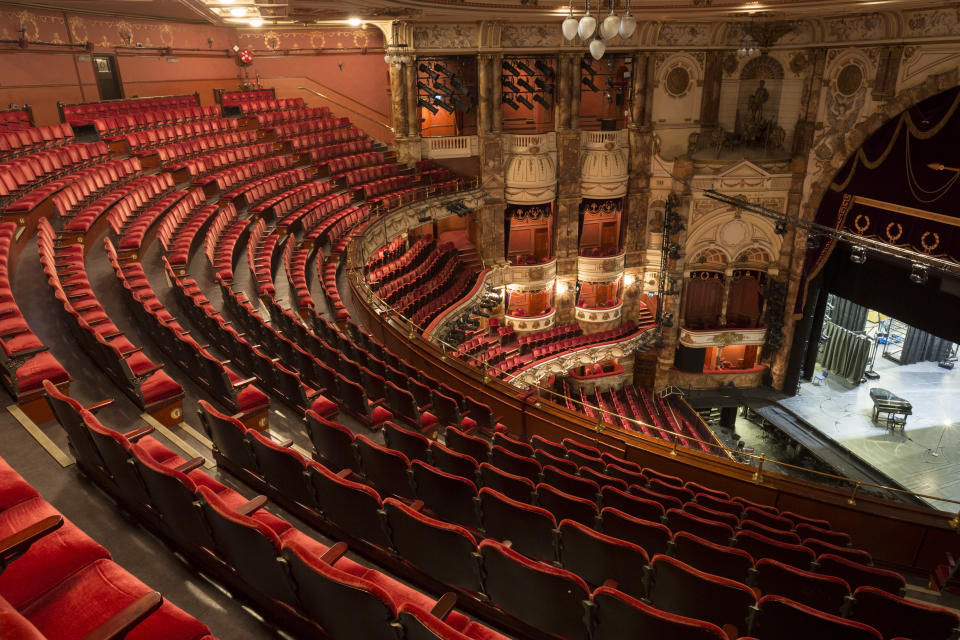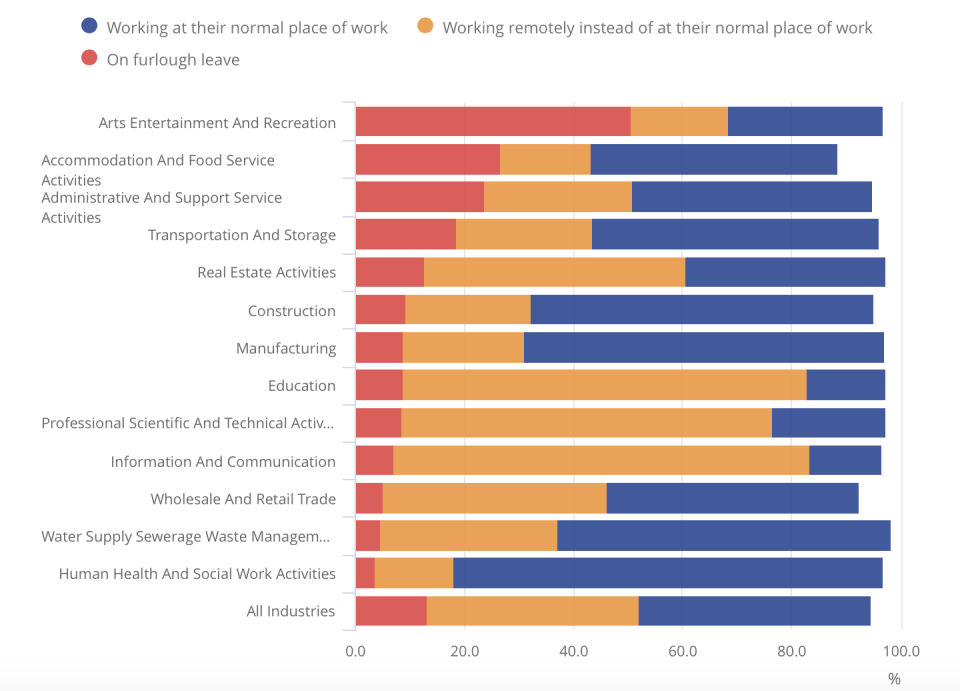Coronavirus: 51% of workers in UK arts and entertainment industry on furlough

The UK’s arts, entertainment, and recreation industry has been the most impacted by the coronavirus pandemic of any sector in the country, with the highest number of firms at risk of collapse and more than half of its workers on furlough.
Some 23% of businesses in the sector believe their risk of insolvency is severe to moderate, more than double the average across all industries, according to the Office for National Statistics (ONS).
Around 51% of the industry’s workforce were still on furlough as part of the government’s Coronavirus Job Retention Scheme between 27 July and 9 August.
That compares with an average of just 13% across all industries, the ONS said. The accommodation and food services industry is the next most affected: Almost 27% of its workers were on furlough during the two-week period.
READ MORE: HSBC giving into China's 'bullying' in Hong Kong, says Mike Pompeo
In the accommodation and food services industry, some 23% of businesses also reported that they had a moderate or severe risk of insolvency.
Due to the nature of the work, both sectors have also seen relatively low proportions of people working remotely, with less than a fifth of workers doing so.
The arts industry has been dealt a particular blow by the pandemic, as public health restrictions prompted the closure of theatres, cinemas, and other venues.
Leading figures from the theatre industry told the government in June that the sector was “on the brink of ruin”.

Writing in an open letter, they warned that 70% of UK theatres could run out of cash by the end of 2020, with many facing financial ruin before the end of the year.
By comparison, almost 75% of workers in the education sector are working remotely, and less than 10% are on furlough.
Similarly, just 7.2% of workers in the internet and communications industry were on furlough during the period, while 76% were working from home.
Across all industries, 6% of the furloughed workforce returned from furlough in the last two weeks, the ONS said.
READ MORE: European stocks slide ahead of virtual Jackson Hole summit
A total of 9.4 million people were placed on furlough at some point, meaning that over a quarter of the UK’s entire workforce has been idled at one point or another since the coronavirus pandemic struck.
Employers could only add new staff to the scheme up until 30 June, which runs until the end of October. Some 1.1 million companies have used the programme to put employees on furlough.
From September, the government will contribute just 70% of a worker’s salary as part of the scheme. This will fall to 60% in October as the scheme is wound down.
Employers must nevertheless top this wage subsidy up to ensure that furloughed employees still receive 80% of their wages up to the £2,500 limit.

 Yahoo Finance
Yahoo Finance 
